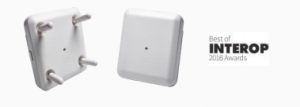
AP 2800 and AP 3800 Powering Options
Look at the figure below about the Early AP-350 and Newer AP 3800 power requirements.
Figure1. Early AP-350 used 6 Watts-Newer AP 3800 requires 802.3at or PoE+
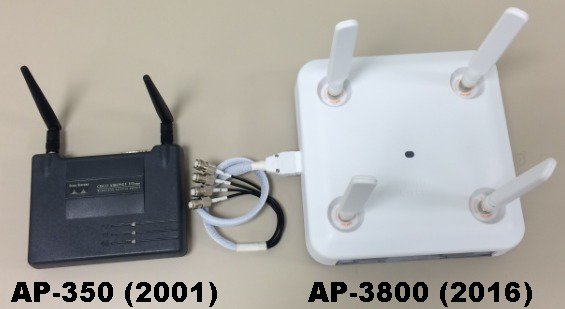
The AP-350 Access Point had one 2.4 GHz radio and processor requiring only 6 Watts of power. These early PoE access points would fully function using the earlier 802.3af (15.4W) powering systems developed in 2000-2003.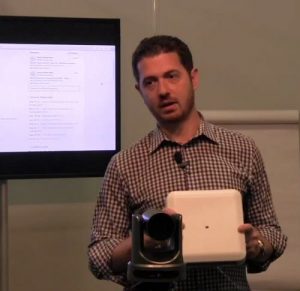
Later PoE standards have since emerged with 802.3at providing up to 30 Watts at the Power Sourcing Equipment (PSE). Many of Cisco’s previous access points such as the AP-1850 and AP-3700 worked best with the higher power sources 802.3at and PoE+ but would function with “reduced functionality” if powered by the older 802.3af 15.4W powering systems.
With the introduction of the XOR radio along with more advanced features, it simply is not feasible to run these higher performance access points on the older legacy 802.3af (15.4W) powering systems. Customers who have such older systems should upgrade to 802.3at (30W) PoE equipment or systems that support uPoE for best performance or use a different power source such as a mid-span injector or local power supply.
Note: If the AP2800 and AP 3800 are powered from an 802.3af power source the LED will cycle though the colors and the radios will be disabled.
Performance requires power as the AP 2800 and AP 3800 have much more advanced features such as:
- Dedicated microprocessor and memory for each radio band
- Dual core processor to manage access point and Ethernet functionality
- Additional XOR radio and antenna switching circuitry, pushing transceiver count to 12 radios
- Cisco CleanAir silicon for complete spectrum analysis and interference detection
- Cisco ClientLink powerful (legacy .11a/g/n and .11ac Wave 1 beamforming)–improving older client connectivity and performance; IEEE specification is limited to only TxBF on 802.11ac Wave-2 clients
- Additional (auxiliary) Ethernet port, USB and advanced radio functions such as 160 MHz / Dual XOR
- Support for smart antenna functionality (WSM monitor mode and enhanced location)
- 802.3bz (NBASE-T) mGig Ethernet support (AP 3800)
- Future hardware expandability using modular technology (AP 3800)
Understanding different types of PoE powering standards:
- Cisco Pre-standard PoE-Original implementation 6-7 Watts (2000-2001)*
- Cisco Pre-standard PoE-upgraded to negotiate up to 10-15 Watts via CDP (2001-2003)
- IEEE 802.3af PoE mechanism that supplies power up to 15.4W (July 2003)*
- IEEE 802.3at PoE mechanism that supplies up to 30W (2009)*
- UPoE Cisco method of Universal Power over Ethernet that supplies power up to 60W (2014)*
Note: The * indicates these are approximate dates and PoE is defined as the maximum power required at the source.
Cisco AP 2800 and AP 3800 easily function with 802.3at powering systems and for advanced features like module support (AP 3800) Cisco UPoE can be used.
Figure2. AP 2800 and AP 3800 requires an 802.3at or better PoE source
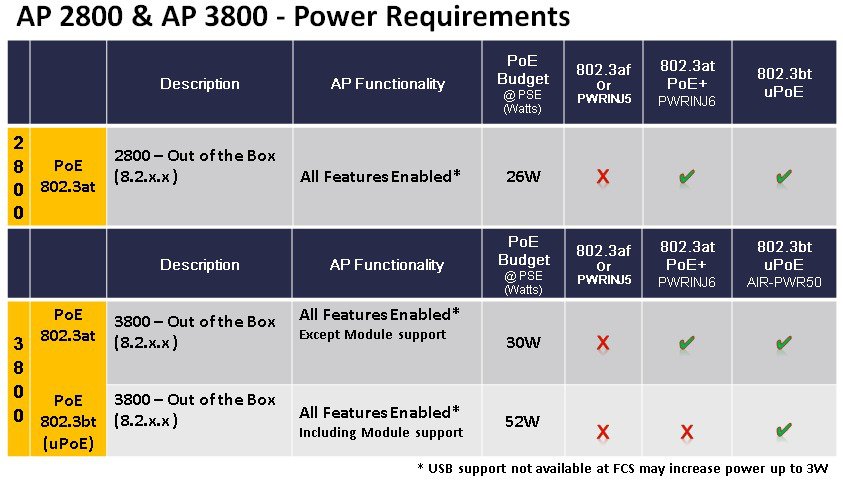
If an 802.3at or better power source is not available, the following Cisco mid-span injectors may be used.
Figure3. Low cost 802.3at GbE injector for AP 2800 and AP 3800 (if mGig is not required)
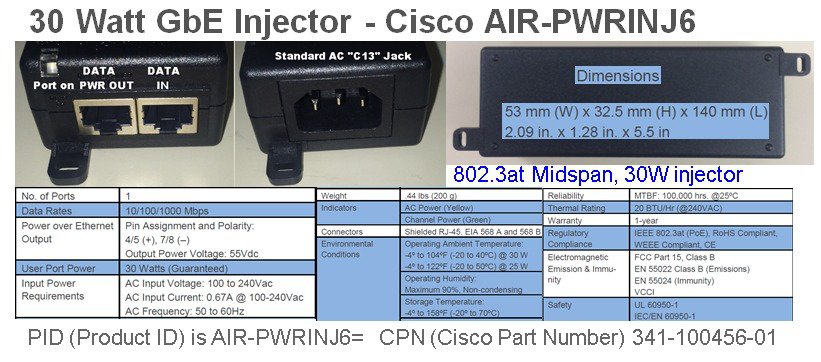
An additional mid-span injector capable of 802.3bz (known as mGig / N-BASE-T).
Figure4. Planned Mid-Span Injector
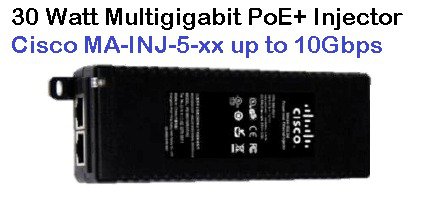
Note: The Cisco AP 2800 does not support a local power supply; however the AP 3800 does have a new high wattage supply that can be used in applications where a PoE source is unavailable.
Figure5. White power supply and cord
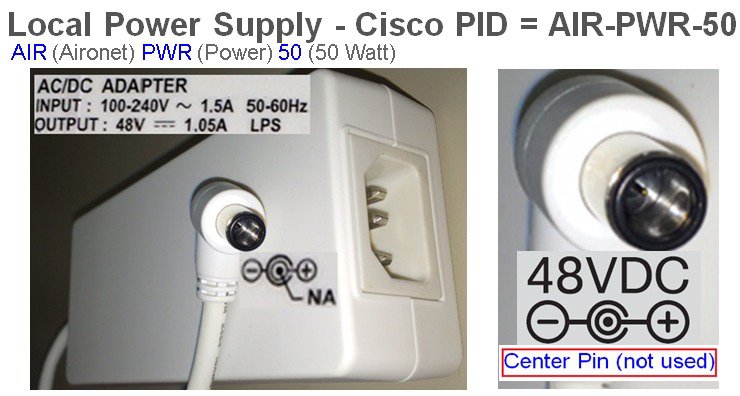
Figure6. AIR-PWR-50 mechanicals – Spare part # AIR-PWR-50=
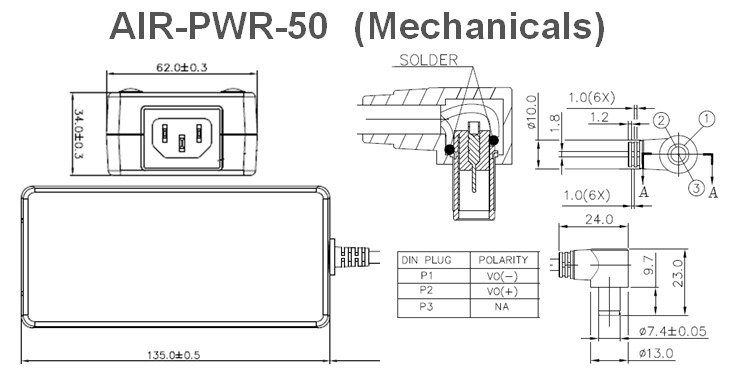
Note: The following Mid-Span devices are not compatible with the AP 2800 AP 3800:
- Mid-Span Injectors–AIR-PWRINJ, AIR-PWRINJ2, AIR-PWRINJ3, AIR-PWRINJ4 and AIR-PWRINJ5
- Local power supplies–AIR-PWR-A, AIR-PWR-B and AIR-PWR-C
More Topics about AP 2800 and AP 3800 Powering Options:
“AIR-AP3802I-B-K9 Power Requirements…Hi, Just connected a AIR-AP3802I-B-K9 AP to the network. The AP seems to be stuck in a boot cycle. In this doc you can see that the AP requires uPOE. Is this my issue?” View Details
Cisco 3800 Access Point
More Related
FAQ’s: Cisco Aironet Series 2800/3800 Access Point Deployment Guide
How to Help Wireless Customers Select the Right Wireless Solutions?
The Smartest Access Point? The New Aironet 4800 Series
Here Comes the Best Cisco Indoor Access Point for You
802.11n and 802.11ac Wi-Fi Antenna Options for Cisco Indoor/Outdoor APs
Benefits of Migrating to Latest Cisco Aironet Access Points
Aironet 2800 vs. Aironet 3800 SERIES ACCESS POINTS
How to Choose the Right Access Point: Cisco 2800 or 3800?


